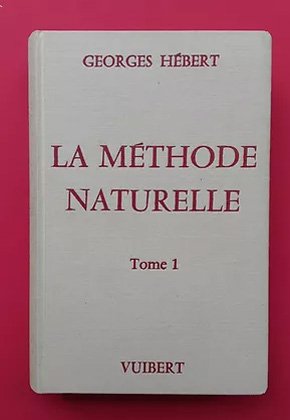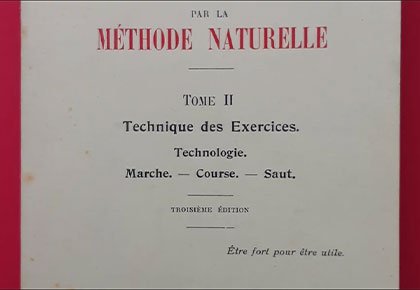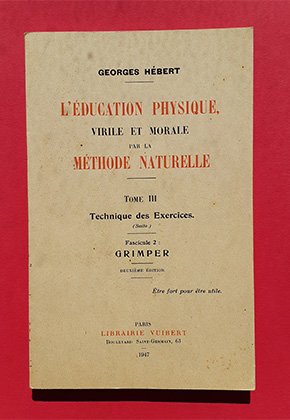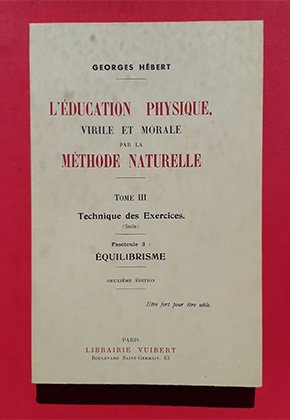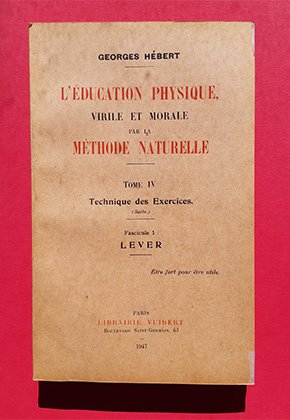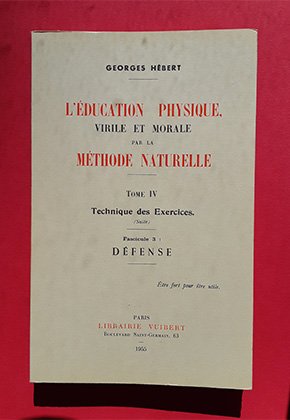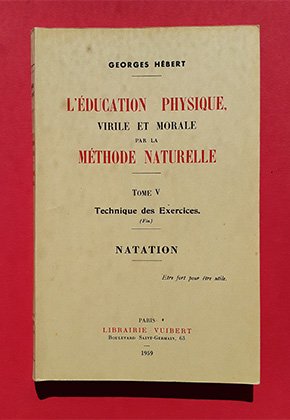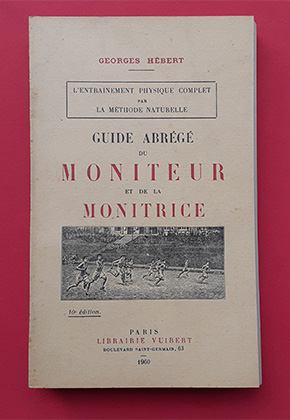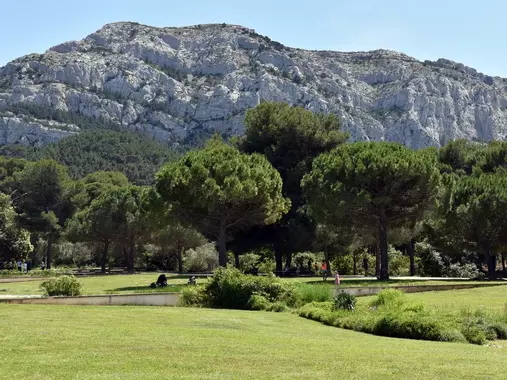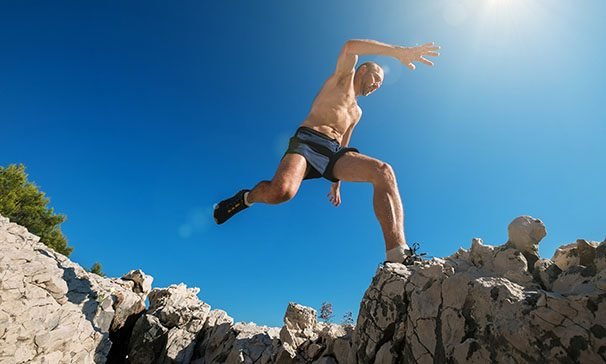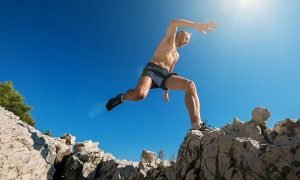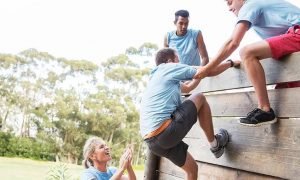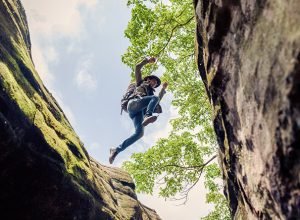Why do we talk about "Natural Method"?
For thousands of years, human beings lived in a natural environment and carried out long walks or runs, produced an amount of work or fight during a day, to ensure their survival. Today we no longer live in the same conditions.
What is the difference between hebertism and the Natural Method?
Georges HEBERT himself answered this question in these terms:
"Practicing tree climbing, in fact, does not consist, as many people imagine it or as some instructors or teachers believe, in limiting oneself to the execution of exercises or movements resulting from the "Natural Method". Hebertism synthesizes a set of actions that can be summarized as follows:
Acquire integral physical development,
Emphasize the skills of all kinds of natural and utilitarian exercises: walking, running, jumping, climbing, lifting, throwing, defending, swimming,
Increase organic resistances and natural immunities by strict observance of the rules of frugality, sobriety and morals,
Harden the body: seek the rustic life,
Develop energy and all other manly qualities,
Finally, put all the physical and virile achievements at the service of social good. »
(Georges Hébert - Revue "L'éducation physique", n°34, October 1925)
33 years later, a few months before his death, he explains the difference between Hebertism and Natural Method:
“The natural method is not Hébertism and it should not be called that. Besides, this method I am not the inventor, it is as old as the world, it was enough to adapt it to the civilized man.
But hebertism is something else, it is the philosophy that must emerge from this natural method to encourage the individual to put at the service of others what he can derive from his physical and virile training. This therefore goes far beyond the framework of a physical culture to become a real essential education linking the physical and the moral. »
(Georges Hébert quoted by Marcel Defarges, magazine "L'éducation physique", 2nd quarter 1958, p. 55)
Who initiated hebertism and the Natural Method?
Hebertism and the Natural Method were initiated from 1905 by the French naval officer Georges Hébert, as a method of physical education.
What does it mean to be "strong to be useful"?
Hébert's full quote is: “Be strong, physically and morally, to be useful to others and, finally, also to yourself”.
In practice, how should we proceed?
To train properly, devote enough time to walking, running, climbing, jumping, throwing, lifting, carrying, defending and swimming.
Can I practice natural indoor training?
Only the outdoors brings all the positive effects of Natural Training. Sessions therefore take place outdoors. Undressing, adapted to the circumstances and abilities, must make it possible to take advantage of the benefits of the air, the sun and the water if possible, and is part of the pedagogical principles. Moreover, the outdoors, and in particular the great outdoors, offers a multitude of possibilities, varieties and changing situations which greatly favor the development of adaptive qualities, eye contact, responsiveness, etc.
By default of nature or appropriate "outdoor" accessible or by very unfavorable weather conditions, indoor practice can be considered but it will always be "by default".
Indoor practice should therefore be limited to more technical sessions or in the presence of weather or particular physical conditions.
What is a "hebertist"?
A "hebertist" is a person who practices natural training as defined in volume 1 of "The Natural Method" by Georges Hébert.
Hebertism is a conception, a way of thinking about human development that generates a way of life.
Is the Hébertist organization for profit?
No, this is a non-profit association. Its purpose is the dissemination of Natural Training according to the Hébert Method, to encourage the practice and all initiatives to bring the method, and its benefits, to as many people as possible.
Are the Hébertist centers independent?
Hebertist centers and clubs are independent of each other and have a different history. They cooperate to conduct research, share their knowledge and/or organize international events.
What is Natural Training?
Natural training (Hébert Method) is a way of conceiving training: the best way to develop and do what man is made for. As the bird is made to fly, man is able to walk, run, jump, climb, move quadrupedally, balance, throw, carry, defend himself or even swim.
Natural training provides full physical, organic and muscular development as well as general skills in basic utility movement forms.
Can Natural Training be practiced alone?
Yes, of course but...by default; Because just as during the vast majority of sessions the family of swimming exercises is not possible, the social dimension of the practice will then be missing: no training possible, no interactions, no encouragement, exchanges...
However, there will of course remain the whole physical and mental dimension. Certain exercises also become impossible (human carrying, wrestling, reception of a throw, etc.)
How can I become a Natural Training instructor?
There are 2 ways to become an instructor:
Become a teacher/instructor in an institution that uses the Natural Method (scout, firefighter, Army, etc.),
Or, have the legal prerequisites (PSC1 in France) and follow a training course provided by a Hébertist organization. There are (known to date) in France, Belgium, Italy provided in French, English and Italian.


